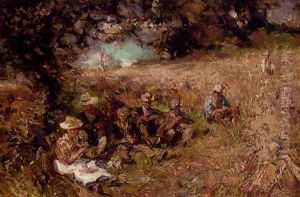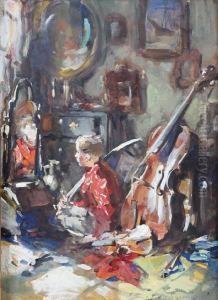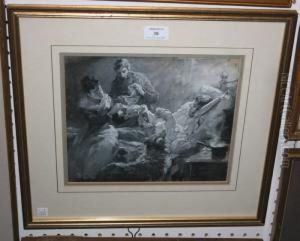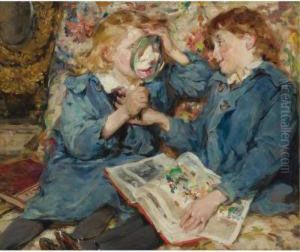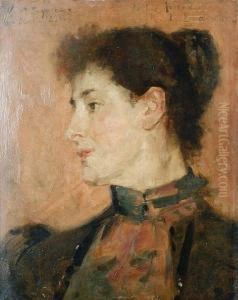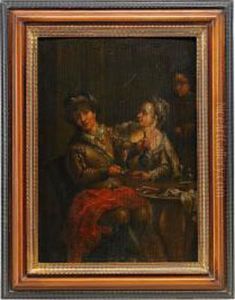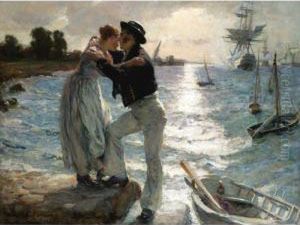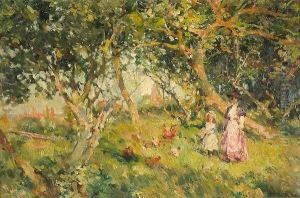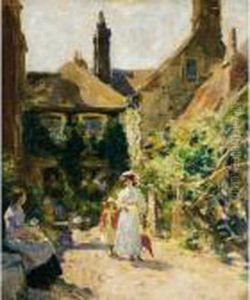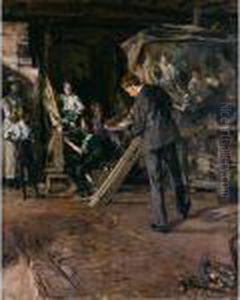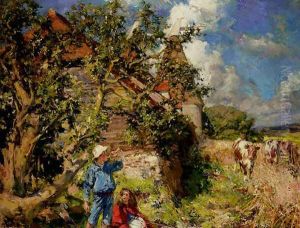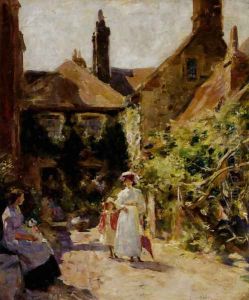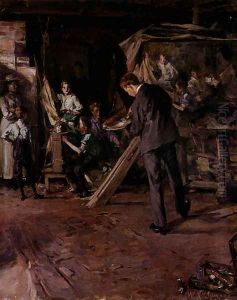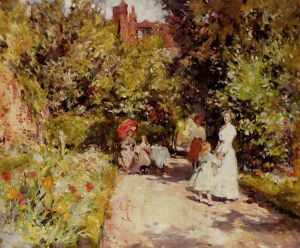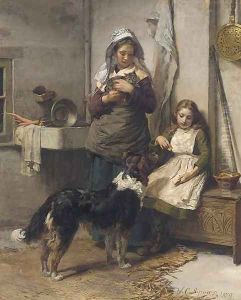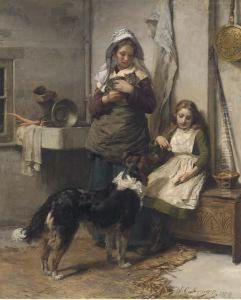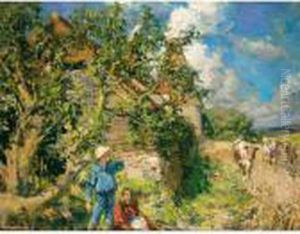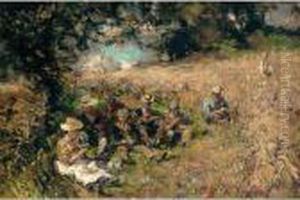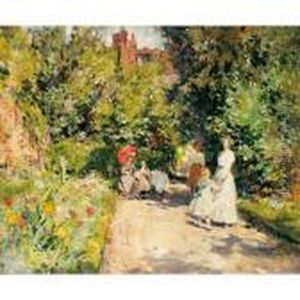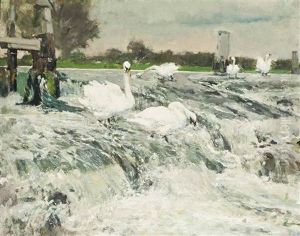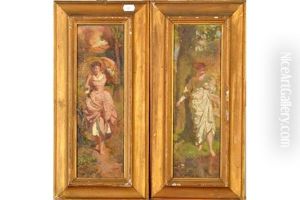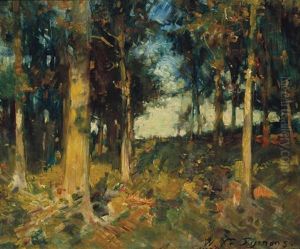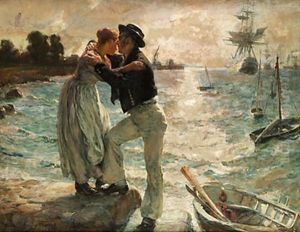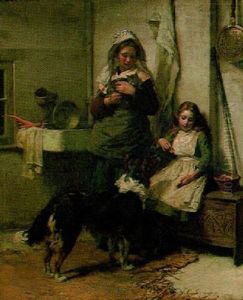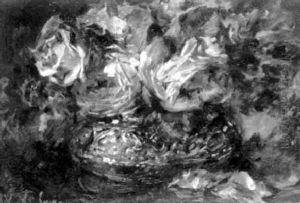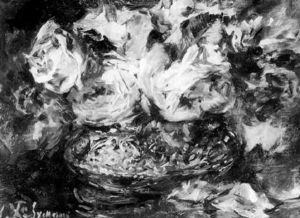William Christian Symons Paintings
William Christian Symons was a British artist, known primarily for his work in stained glass and as a mural painter. He was born in 1845 in London, England, and his career flourished during the late Victorian and Edwardian periods. His artistic talents were recognized early, and he was educated at the Royal Academy of Arts. Symons was deeply influenced by the Arts and Crafts movement, which emphasized the importance of craftsmanship and design and often looked to medieval, romantic, or folk styles of decoration.
Symons' work in stained glass was notable for its vivid coloration and intricate designs, and he often incorporated themes of history, literature, and mythology. He was also a prolific mural painter, and his works can be found in a variety of public buildings including churches, cathedrals, and civic buildings across the United Kingdom.
Throughout his career, Symons was committed to the ideal of art as an enriching and moral force in society. His works often contained moral or allegorical messages, which was a characteristic of the Victorian era's approach to art. He was also an active member of various artistic societies and wrote on art theory and criticism, contributing to the intellectual discourse of the time.
Symons' dedication to his craft earned him numerous commissions and a degree of fame in his lifetime. He was recognized by his contemporaries as a skilled artist who could blend technical proficiency with a unique aesthetic vision. However, like many artists of his era, his name and works have become less known to the general public over time.
William Christian Symons passed away in 1911, leaving behind a legacy of work that continues to be appreciated by those who study Victorian and Edwardian art. His contributions to the arts, especially in the realm of stained glass and mural painting, remain significant examples of the period's artistic achievements.
